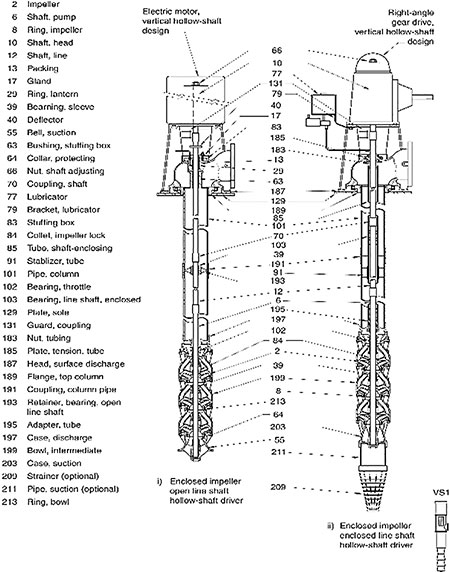

The term bowl efficiency is specific to vertically suspended (VS) pumps. These pumps have the pumping element (bowl assembly) submerged in the liquid with a column pipe attached that transmits the liquid to the surface. Focusing on the VS0 and V1 types of vertically suspended pumps in Images 1 and 2, it can be seen that there are multiple pumping stages (bowls) that connect to the column pipe going to the surface.
Depending on the application, the length of the column pipe and the number of column bearings (VS1) will change. Additionally, it is noticeable that the V0 type has a submerged motor whereas the VS1 type has a motor above grade. The variability of the column length, bearings and motors make it necessary to look at the efficiency of just the bowl assembly for proper comparison of the pumping elements.
Pump efficiency is similar to bowl efficiency in that it is considering the pump without the driver and is often used for overhung and between bearing pumps. If pump efficiency was applied to the VS1 and V0 types above the pump, efficiency would change depending on the length of the column pipe and bearings, which is a function of the specific application. Image 3 shows an overhung pump, and the inlet and outlet system piping will connect to the pump casing (Item 1).

The measurement of pump efficiency is relative to the power added to the system relative to inlet and outlet flange and the power input the shaft. For more information on pump efficiency, refer to HI’s Standard for “Methods for Rotodynamic Pump Efficiency Testing (HI 40.6)” at pumps.org.
Read more HI Pump FAQs content here.

